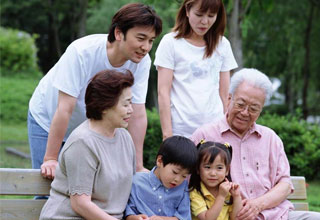China's population policy conundrum
- By Zhang Lulu
 0 Comment(s)
0 Comment(s) Print
Print E-mail China.org.cn, November 11, 2013
E-mail China.org.cn, November 11, 2013
|
|
|
Gradual but progressive changes to China's population policy are expected to address the country's aging population and dwindling demographic dividend. [File photo] |
If there were a wish-list among Chinese citizens for policies which need to be reviewed at the Third Plenary Session of the 18th CPC Central Committee, which is taking place in Beijing from Nov. 9 to 12, then China's one-child policy would feature close to the top of that list.
The one-child policy has been highly controversial since it was introduced nationwide in 1982, but taking into account China's gigantic 1.3 billion population, some argue that rather than just adjusting the policy, overall population policy reform is necessary to address more deeply-rooted problems.
The aging population and dwindling labor force
China's aging population reached 200 million this September. Nearly 25,000 people turn 60 in China every single day, and one person retires every second. The elderly population is expected to grow to over 300 million by the year 2025 and 400 million by 2034, which will pose formidable challenges to China's pension and social security system, and put great pressure on the younger generation.
China's demographic dividend is dwindling. The Chinese economy has enjoyed unprecedented growth for the past three decades, and the advantage of a young able workforce has been one of the driving forces behind China's economic miracle. Some people believe that the demographic dividend has contributed 27% to China's economic growth. However, after its labor force dropped for the first time in 2012 (a decrease of 3.45 million) according to the data released by the National Bureau of Statistics earlier this year, the demographic dividend is on the verge of disappearing, which may cause China's growth to slow still further.
How to improve the demographic landscape
In order to meet the challenges of an aging population, setting up nationwide old-age care system is vital.
The report of the 18th National Congress of the CPC last November pledged to "integrate basic old-age insurance for non-working urban residents and the rural population, provide sufficient funding for personal accounts for old-age insurance in a phased way, and place basic pensions under unified national planning."
The Party has also pledged to develop the old-age services industry. The consumption demand of Chinese senior citizens has exceeded one trillion yuan (about US$164 billion), but the value of products and services targeting them is less than 100 billion yuan (US$16.4 billion), according to the latest data released by the China Committee on Ageing. The gap between the supply and the demand in the aging industry will create huge opportunities.
As for the demographic dividend, Premier Li Keqiang observed last month at the 16th National Congress of All-China Federation of Trade Unions that there is still a "talent dividend" in China. Skilled workers make up 36% of China's entire urban workforce, and 25% of these skilled workers have advanced skills.
The Chinese government is also funding training for 10 million workers annually. Nevertheless, this is far from enough to meet the demands for a skilled labor force required if China is going to transform into an economy led by innovation. It is therefore imperative to increase training,in order to transform the demographic dividend into a talent dividend.
Another change expected to take place is reform of the household registration system. The long-standing restrictions preventing the rural population moving to urban areas has aggravated the labor force shortage. China will accelerate reform of the household registration system and conduct registration of rural migrant workers as permanent urban residents in an orderly way, according to the report of the 18th National Congress of the CPC.
Gradual transformation of China's population policy
Some analysts have inferred that the removal of the phrase "keeping the birthrate low" from the report of the 18th CPC National Congress could indicate that the one-child policy will be loosened nationwide, but given China's huge population and the problems this entails, the pledge to steadily improve the population policy and promote long-term and balanced population growth is more significant.
In other words, changes to China's population policy may not, and should not be made abruptly or on a blanket scale, but will be progressive and gradual.






